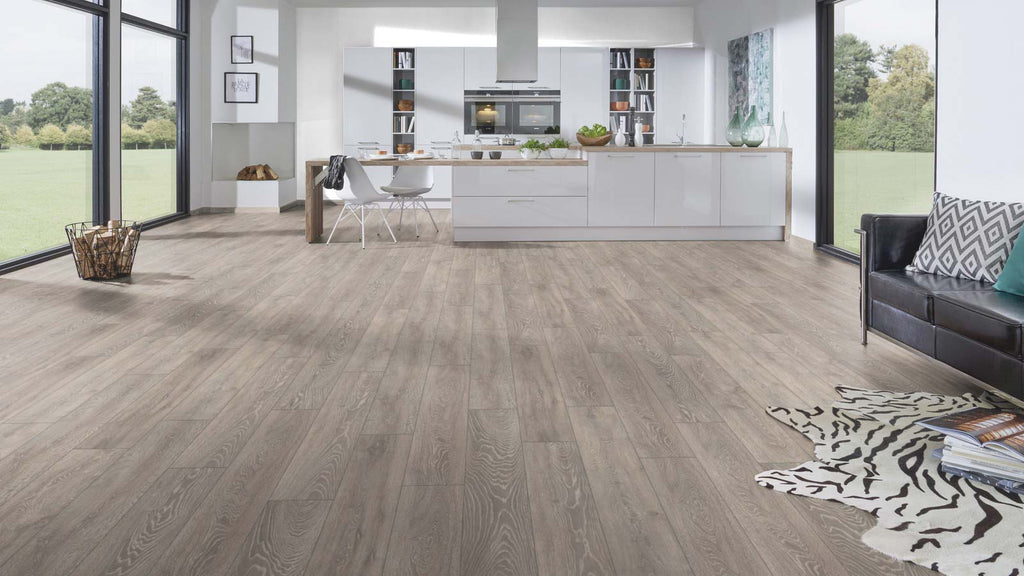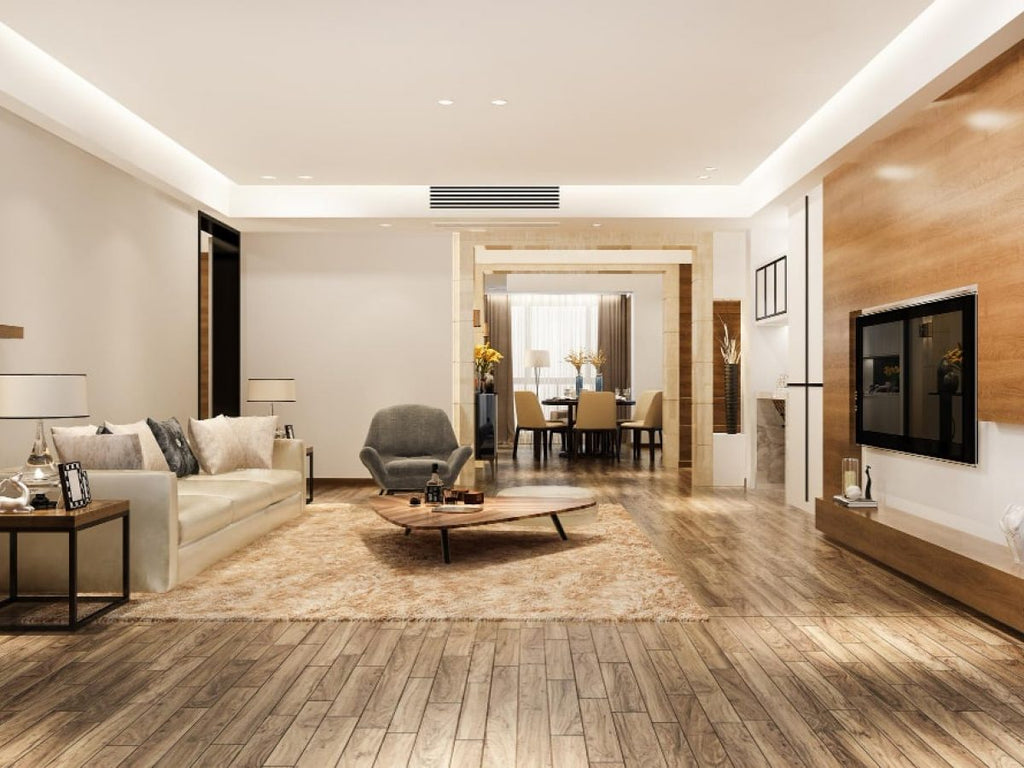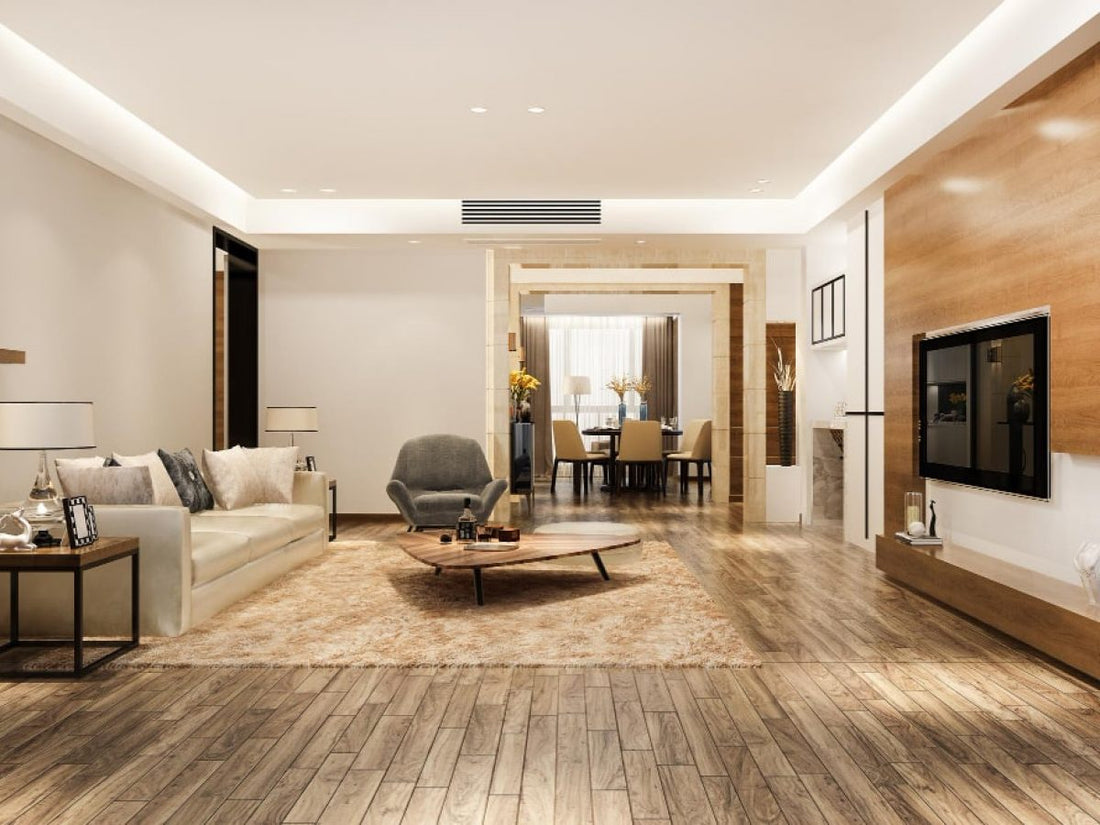The core characteristics key to determining the length of time your floors are waterproof, another in the series: You Asked, We Answer: Understanding Water-Resistant Laminate Floors and Their Swell Rates.
Welcome back to our 'You Asked, We Answer' series, your trusted source for flooring wisdom. Today, we're delving into a crucial aspect of laminate flooring that often confuses buyers—the varying lengths of time manufacturers claim for water resistance. Whether it's 24, 72, 80 hours, or more, understanding the nuances behind these claims is essential for making an informed decision. The key to unraveling this mystery lies in comprehending the swell rate of the High-Density Fiberboard (HDF) core. In this post, we'll break down what a swell rate is and explore the implications of different rates, such as 15%, 12%, 8%, and 5%, helping you make a well-informed choice for your flooring needs.
One quick note... obviously flooding is bad for all homes and all types of flooring. It doesn't matter if your flooring is partially or completely waterproof, flooding is very bad. It will destroy your walls and your subfloor, and if you have a floating floor (like laminate, SPC vinyl, WPC vinyl, PVC-free vinyl, etc) then bad things will happen if you do not replace your flooring after days under water. Underlayment gets destroyed, water trapped under a floating floor leads to mold and mildew and it's just not good. So, this article is about water-resistant laminate floors, and higher water resistance is better than lower water resistance. But a flood is a flood and no degree of waterproofing changes the damage a flood will do to a home with a floating floor. Make sense? Cool, on to the article.
What is Swell Rate?

Before we dive into the specifics, let's demystify the term "swell rate." In the context of laminate flooring, the swell rate refers to the extent to which the HDF core expands when exposed to moisture. This expansion is crucial to understand because it directly impacts the time your laminate flooring can withstand water before damage occurs.
Understanding the Numbers: 15%, 12%, 8%, and 5%
Different laminate flooring products come with varying swell rates, often expressed as a percentage. The percentage represents the amount of expansion the HDF core experiences when subjected to moisture. Here's a breakdown of common swell rates and what they mean for the water resistance of your laminate floors:
15% Swell Rate Laminate Floor:
Laminate flooring with a 15% swell rate is designed to resist moisture for a shorter duration. While it may provide waterproofing for a certain period, it's essential to understand the limitations. Typically, these floors can withstand water exposure for 24 to 48 hours. Most laminate flooring products that do not refer to themselves as water-resistant land in this range. Some core materials have an 18% higher swell rate, but even with a poor swell rate rating, the surface and tight click lock of the flooring will give the surface water resistance usually at least 24 hours, often longer.
12% Swell Rate Laminate Floor:
A 12% swell rate signifies a moderate level of water resistance, and this range is low enough to refer to the flooring as having extra water-resistant characteristics. HDF core boards with lower swell rates cost more money to produce and you will start to pay a premium for swell rates of 12% or lower. Floors with this swell rate can endure longer exposure to moisture, often in the range of 48 to 72 hours. This makes them suitable for areas prone to occasional spills or moisture. 10% to 12% swell rates are often promoted in marketing materials for 72-hour water resistance. We have done informal testing and in our experience with just dropping sample pieces in a bucket of water for 3 days, this has proven accurate.
8% Swell Rate Laminate Floor:
Laminate floors with an 8% swell rate boast increased water resistance. They can withstand moisture for an extended period, ranging from 80 to 100 hours. These often have a Black Core, and that is usually an indication of ~8% core swell. These floors are ideal for spaces where water exposure is more frequent. Again, for our testing, we saw many of the pieces of black core laminate flooring avoid core damage for well over 100 hours. It was unscientific, but little visual damage in 7 days of water submersion in our tests.
5% Swell Rate Laminate Floor:
The 5% swell rate represents a very high level of water resistance. Laminate flooring with this characteristic can resist moisture for an extended period, often exceeding 100 hours. I have seen some brands promote this as '500 hour waterproof flooring'. I have not seen official lab test results to support this length of time claim, but I can tell you our own tests showed no visual damage after 3 weeks underwater. 3 weeks!! That is 504 hours, so it is possible the 500-hour claim is true.
The 5% swell floors are a top choice for areas with high humidity or the potential for prolonged water exposure.
Making an Informed Decision
When considering water-resistant laminate flooring, it's crucial to align the swell rate with the specific needs of your space. Factors such as the room's function, potential for spills, and overall humidity levels should influence your decision. Additionally, it's essential to follow the manufacturer's guidelines for installation and maintenance to maximize the lifespan of your laminate floors.
In the world of water-resistant laminate flooring, understanding swell rates is the key to deciphering the longevity of a floor's waterproof capabilities. As you embark on your flooring journey, armed with this knowledge, you can confidently choose a product that not only suits your aesthetic preferences but also aligns with the practical demands of your living space. Stay tuned for more insights in our 'You Asked, We Answer' series, guiding you through the intricacies of flooring choices and ensuring you make the best decisions for your home.
For my money, spending the extra money to get either an 8% or 5% swell rate laminate floor is worth the small additional investment.
Enhancing Water Resistance in Laminate Flooring: Beyond Swell Rates

While understanding swell rates is crucial in gauging a laminate floor's water resistance, manufacturers employ various techniques during production to enhance this characteristic further. Here are additional factors that contribute to the overall water resistance of laminate flooring:
- Top Layer Sealant:
A factory can apply a specialized top-layer sealant or coating to the laminate flooring. This protective layer acts as a barrier, preventing water from seeping into the core. High-quality sealants not only enhance water resistance but also add durability to the surface, making it more resistant to scratches and stains.
- Advanced Joint Systems:
The joints or seams between laminate planks are potential weak points for water infiltration. Innovative joint systems, such as advanced click-lock mechanisms or waterproof adhesives, can significantly reduce the risk of moisture penetration. A well-designed joint system creates a tight seal, enhancing the overall water resistance of the flooring.
- Water-Resistant Core Materials:
While swell rates focus on the HDF core, using water-resistant core materials, such as High-Density Polymer (HDP), can provide an additional layer of protection. HDP cores are inherently more resistant to moisture, contributing to the overall longevity of water-resistant laminate flooring.
- Tight Board Construction:
The manufacturing process plays a pivotal role in the water resistance of laminate flooring. A factory can implement tight board construction techniques, ensuring that each layer of the laminate is securely bonded. This minimizes the chances of water permeating through the layers, offering enhanced protection against moisture damage.
- Edge Sealing:
Focusing on the edges of laminate planks is crucial for comprehensive water resistance. Some manufacturers apply edge sealing treatments to further fortify vulnerable areas. This extra layer of protection prevents water from infiltrating the sides of the planks, especially in environments where spills are more likely to occur.
- Wax Impregnation:
Wax impregnation is a technique where the edges of the laminate planks are treated with a water-repellent wax. This additional measure creates a barrier that helps prevent water from penetrating the edges, adding an extra layer of defense against moisture-related issues.
Conclusion:
While swell rates remain a pivotal factor in assessing water resistance (the top factor to consider), these additional measures implemented during the manufacturing process contribute significantly to the overall performance of laminate flooring. When shopping for water-resistant laminate, it's advisable to inquire about these supplementary features to ensure you select a product that aligns with your specific needs. By understanding both core characteristics (swell rates) and additional enhancements, you can confidently invest in laminate flooring that not only looks great but also stands up to the challenges of moisture-prone environments.
Final word... as stated in the opening paragraph of this blog, having a flood is a worrisome event for many reasons. The reality is this... you likely will never keep a floor if you had a flood in a room for a week. The area would be disgusting and need massive work. The walls would be destroyed, the subfloor would be severely damaged, and the underlayment under the laminate would have to be replaced to ensure no future mold/mildew. So, just to be real... 100% vinyl flooring that is floating floor, or even 500-hour waterproof laminate flooring... a flood that lasts for days and days will almost certainly mean a complete removal of all flooring products to address the major damage to your subfloor and walls would have experienced. Goes without saying but hope you never get a flood and if you do, it takes days and days to have the water removed... you should expect to replace whatever flooring type you had.
Stay informed, and enjoy a flooring solution that combines style with functionality.
Other flooring blog articles you may want to read:
You Asked, We Answer: Exploring Types of Floor Nosing
You Asked, We Answer: How to Protect Flooring from Furniture Damage
You Asked, We Answer: Design Decisions – Floor, Walls, or Furniture?
